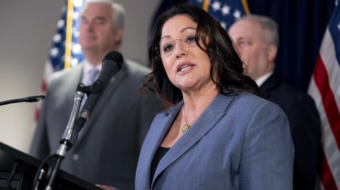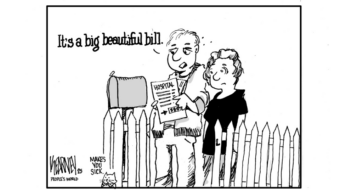
Millions of American workers have no paid sick days at all, especially those who need them the most, says a recent “snapshot” by the Economic Policy Institute.
A whopping 38 percent of the workforce gets no paid time off when they are ill, and the further you look down the wage scale, the number becomes higher. Of the top 10 percent of wage earners, 86 percent are entitled to paid sick days.
At the other end of the scale, only 19 percent of those in the bottom tenth percentile can take time off when they’re physically ill without feeling their wallet suffer too.
The information was compiled by the labor-backed think tank from the March 2010 National Compensation Survey that was conducted by the federal Bureau of Labor Statistics.
Raising the Global Floor, a 2010 study by Jody Heymann and Alison Earle, cited by the policy institute, found that of 190 nations studied, 163, “almost all of them much poorer than the United States,” guarantee paid time off for sick workers.
“A law giving American workers that same benefit could increase productivity in the workforce through heightened worker loyalty, reduced turnover and reduced workplace illness,” says the EPI website.
Cities across the U.S. are considering local ordinances compelling employers to offer at least a few days per year of compensated sick time. San Francisco enacted such a law and New York City came close, only to have the proposal scuttled by the billionaire business mogul-turned-mayor Michael Bloomberg.
Proponents of the law argued that it would benefit society overall in several ways. Firstly, the workers who are least likely to have time off are low-paid service industry workers, especially in restaurants and fast food outlets.
In 2009, during the drive to pass such a law in New York, the Working Families Party’s Dan Levitan cited a study showing that 84 percent of restaurant workers have no paid sick leave.
These workers therefore often feel forced to come to work sick, in turn infecting those they serve. They are also likely to infect their coworkers, who then infect other customers, creating a cycle that leads to loss of productivity and higher medical costs.
In addition, the sick workers often ride public transit, where they spread germs along the way to their workplaces.
Without sick leave, employees are also unable to take time off to take children to the doctor or stay home with them when they are sick. These children often end up in school, where they spread contagion to the general population.
Businesses opposed the rules changes, arguing that they would lead to higher costs of business and unemployment.
But the 2010 report shows different.
Raising the Global Floor, published by Stanford University Press, presents the “first ever, global analysis of the relationship between labor conditions, national competitiveness, and unemployment rates in 190 countries. The authors’ findings are dramatic. They show that there is no relationship between unemployment rates and providing basic protections in a series of critical areas.”
Further, the authors found, more sick days and better working conditions overall made countries more, instead of less, competitive. Business owners in San Francisco, after the law was enacted, agreed. As of Feb. 2011, more than two-thirds of them said they supported the local ordinance.
The Centers for Disease Control, the federal agency that aims to prevent or slow down outbreaks of illnesses, advises anyone who feels sick should stay home. As of now, however, nearly two in five workers don’t have that luxury.
Image: Paul Wilson // CC BY-NC-SA 2.0










